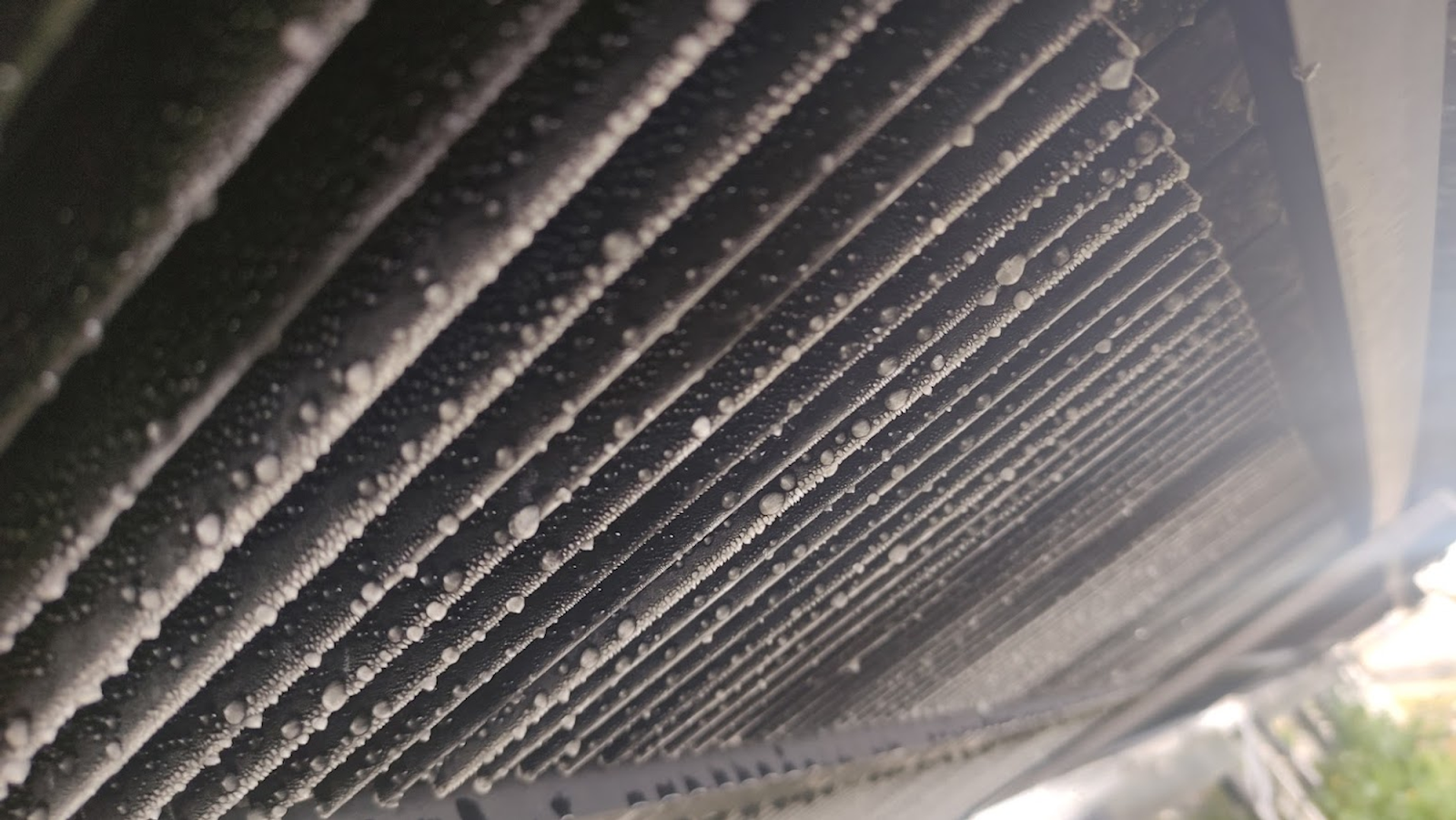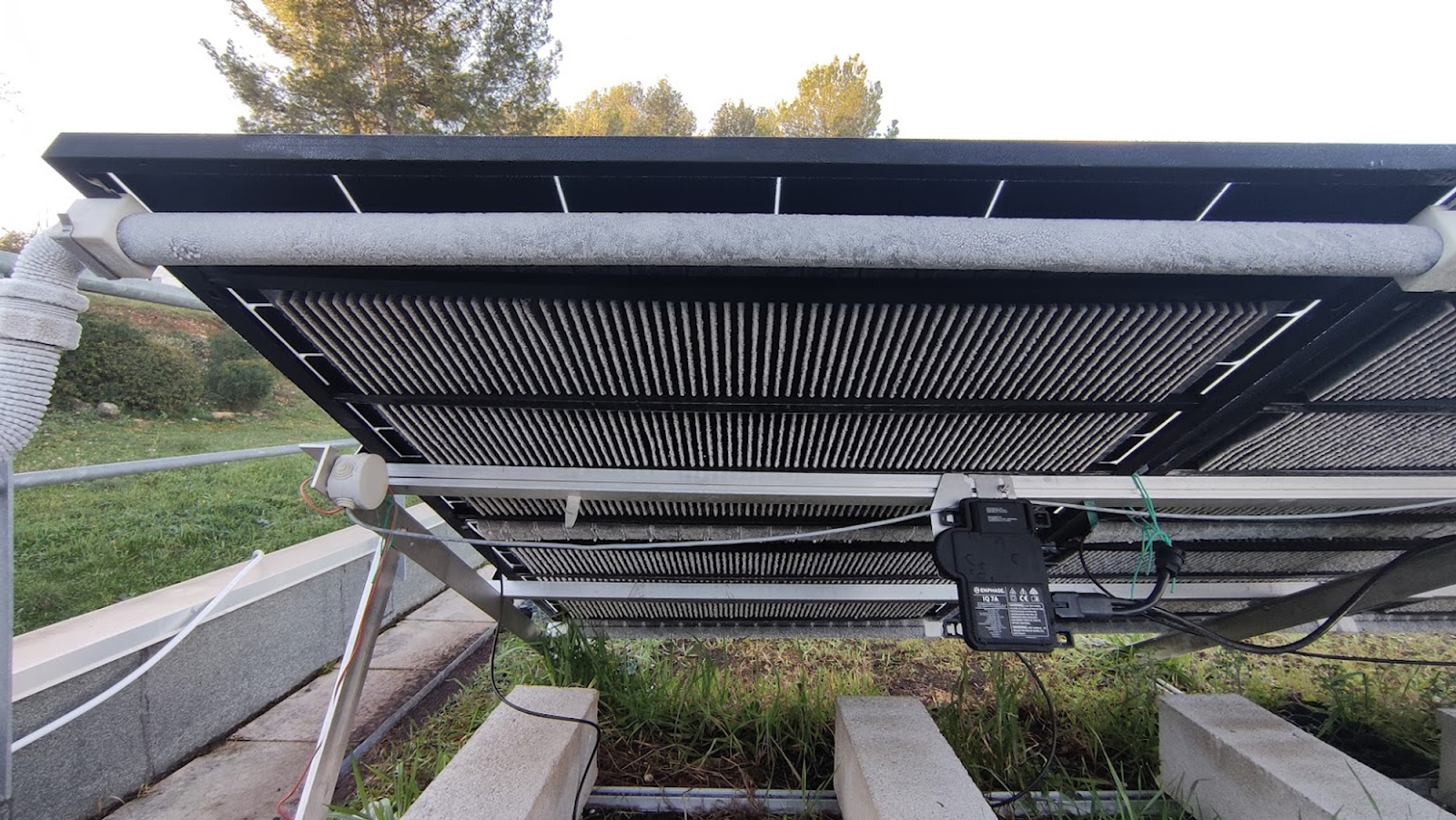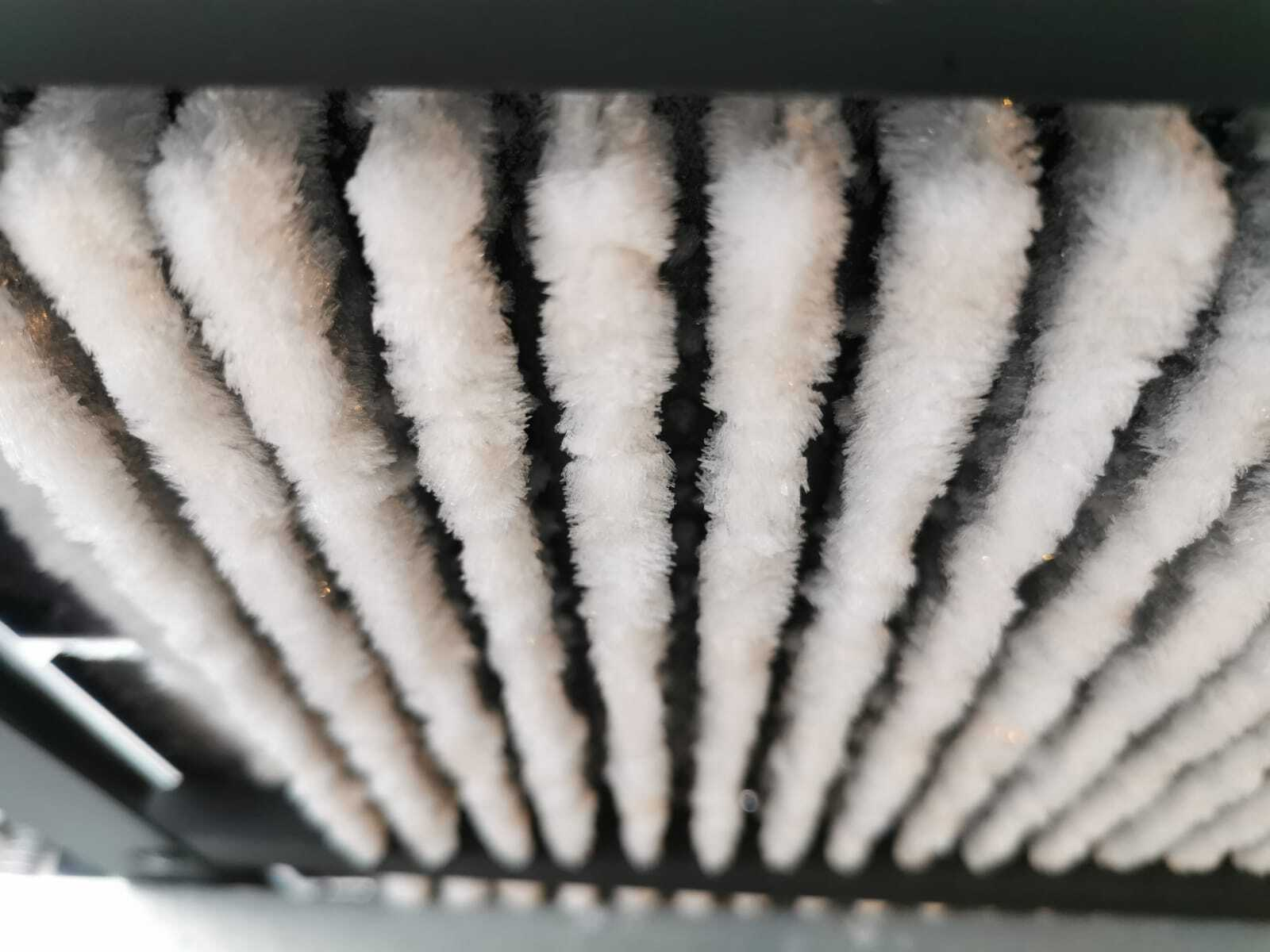What impact does condensation, frost or snow have on the performance of a solar thermal system with SPRING4 MAX solar panels?
Condensation / Frost
Dualsun SPRING4 MAX hybrid panels provide the necessary thermal power to the heat pump (HP) day and night, regardless of whether outdoor temperatures are above or below zero (down to -15°C or even -20°C at the evaporator inlet, depending on the HP model).
During the day, the SPRING4 MAX panels absorb heat from both solar radiation and ambient air. On sunny days, the temperature of the heat transfer fluid exiting the panels can be higher than the outside air temperature.
At night, the panels only capture heat from the ambient air, and the fluid temperature circulating through the panels is typically lower than the air temperature.
As a result, in cold and humid conditions, water vapor in the air may condense on the panels, both on the front and back surfaces. This condensation releases latent heat due to the change in state, which is actually beneficial for system performance. This phenomenon occurs frequently when the outdoor temperature drops below around 5°C.
When the outdoor temperature drops below 0°C, the condensation can freeze on the surface of the SPRING4 MAX hybrid solar panels. Frost creates additional thermal resistance on the panel surface, reducing the effectiveness of heat exchange with ambient air.
The impact of frost on the thermal performance of SPRING4 MAX panels depends on its thickness:
When the frost layer is thin (less than a few millimeters), the impact on performance is less than 10%, which is negligible for the overall system. In this case, no defrost cycle will be triggered by the heat pump.
When the temperature drops below approximately -7°C, frost can thicken, reducing the panel’s thermal performance by more than 10%. In this case, a defrost cycle will be initiated to melt the frost.
Frost melting can also occur naturally with the morning sun, rising outdoor temperatures, or direct sunlight, helping to clear the panels. Photovoltaic production is not affected.
Snow
Following snowfall, Dualsun SPRING4 MAX panels continue to deliver the thermal energy needed for the heat pump to operate effectively. If performance drops due to snow accumulation, defrost cycles will be triggered as needed, allowing the snow to slide off the front surface of the panels.
Want to learn more?
To find out more: How does the delta temperature of the SPRING panel change depending on external conditions?




